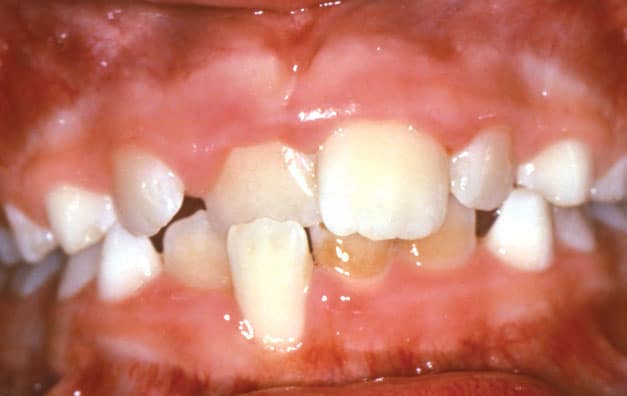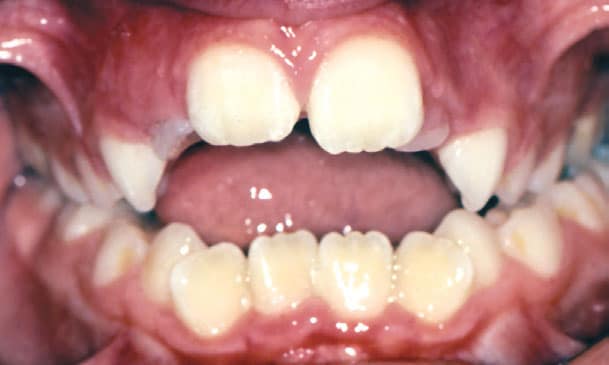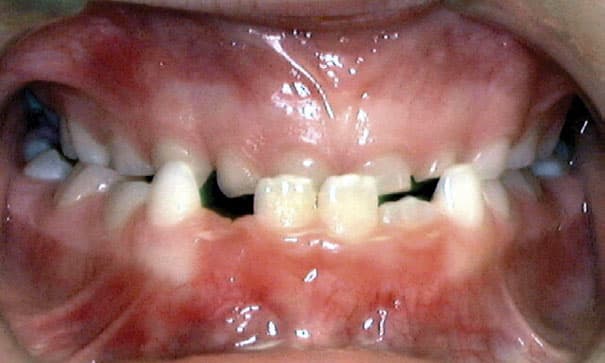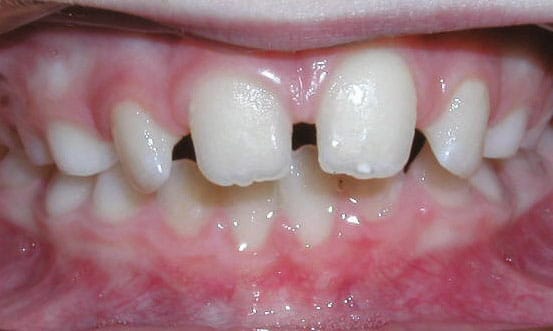Orthodontic issues are quite common, as teeth rarely come in perfectly aligned. Malocclusion, often referred to as a “bad bite,” can create challenges with chewing, oral hygiene, speech, and aesthetics. It also increases the risk of premature wear or cracks in the teeth. A bad bite may be inherited or can develop from habits such as thumb sucking, dental issues, accidents, birth defects, or other medical conditions.
Understanding the specific orthodontic problem that you or your child may have is a crucial first step toward achieving a healthier smile. Orthodontic care with Dr. Robert Iezman can improve both the function of your bite and the appearance of your smile.
Below are some examples of the most common orthodontic problems:

Upper Front Teeth Protrusion
This condition occurs when the upper front teeth extend too far forward or the lower teeth are positioned too far back. It impacts both the appearance and functionality of the teeth. Often caused by misalignment of the back teeth, this issue puts the front teeth at a greater risk of trauma and fractures.

Overbite
An overbite occurs when the upper front teeth extend over the lower front teeth, sometimes leading the lower teeth to bite into the roof of the mouth. This misalignment can result in early wear and chipping of both the upper and lower front teeth.

Crossbite
In this type of bite issue, the upper teeth sit inside the lower teeth. Crossbites can result in uneven jaw growth, gum recession, tooth mobility, and early wear and chipping of teeth.

Open bite
An open bite, where the upper and lower front teeth don’t overlap, can impact proper chewing. It may also lead to habits like tongue thrusting, early wear of the back teeth, and difficulty biting with the front teeth.

Underbite
An underbite occurs when the lower jaw protrudes, causing the lower front teeth to sit in front of the upper front teeth. This misalignment typically signifies an improper alignment of the back teeth, which can result in premature wear and a higher risk of fractures.

Crowding
When there is insufficient space for teeth to emerge from the gums, crowding occurs. This can often be corrected through expansion, typically without needing to remove teeth. Crowding can hinder oral hygiene and make it more difficult to keep the teeth and gums healthy.

Spacing
Spacing issues can occur due to missing teeth or may simply be a cosmetic concern, which affects the overall appearance of a person’s smile.






